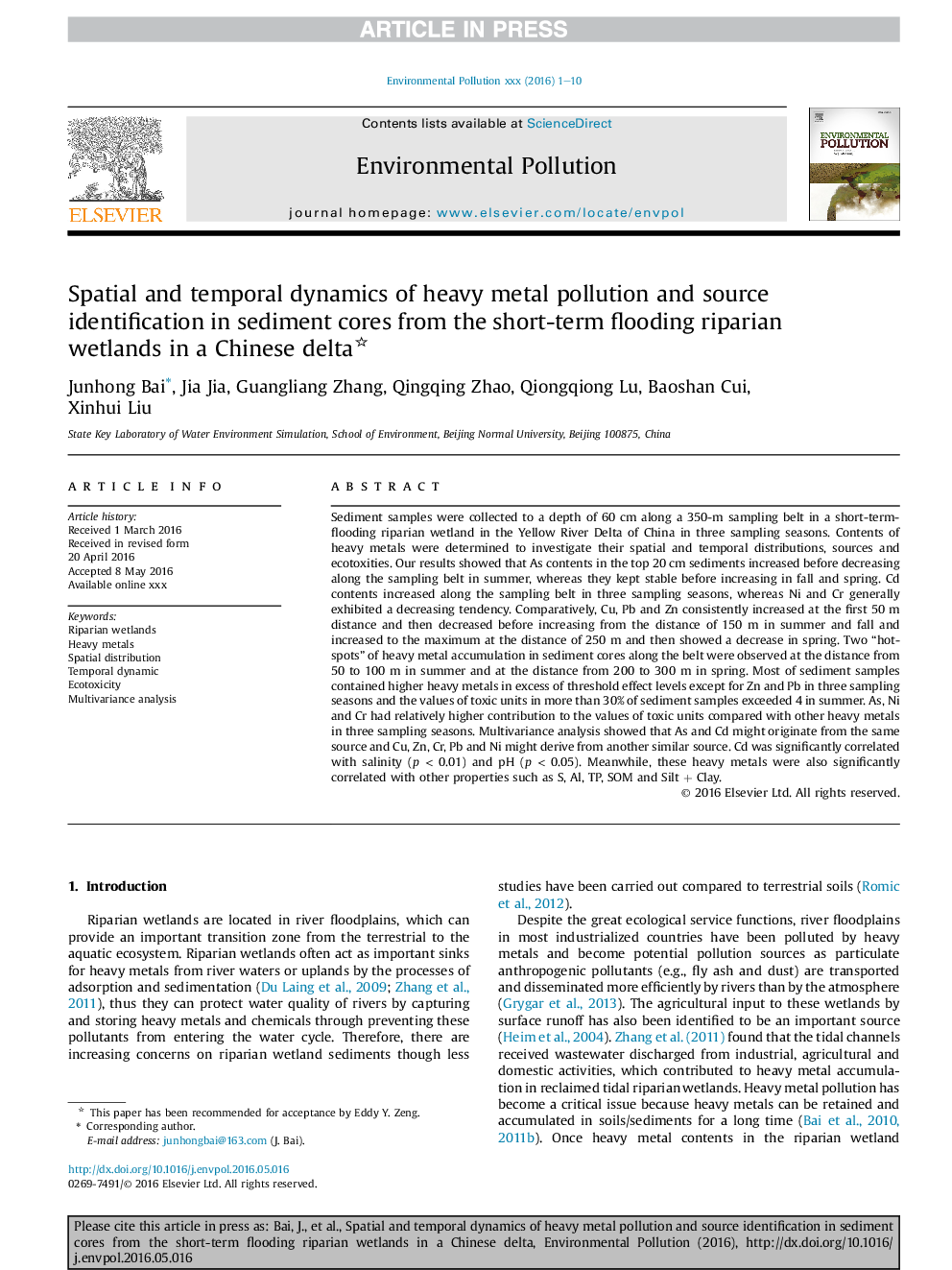| Article ID | Journal | Published Year | Pages | File Type |
|---|---|---|---|---|
| 8857809 | Environmental Pollution | 2016 | 10 Pages |
Abstract
Sediment samples were collected to a depth of 60 cm along a 350-m sampling belt in a short-term-flooding riparian wetland in the Yellow River Delta of China in three sampling seasons. Contents of heavy metals were determined to investigate their spatial and temporal distributions, sources and ecotoxities. Our results showed that As contents in the top 20 cm sediments increased before decreasing along the sampling belt in summer, whereas they kept stable before increasing in fall and spring. Cd contents increased along the sampling belt in three sampling seasons, whereas Ni and Cr generally exhibited a decreasing tendency. Comparatively, Cu, Pb and Zn consistently increased at the first 50 m distance and then decreased before increasing from the distance of 150 m in summer and fall and increased to the maximum at the distance of 250 m and then showed a decrease in spring. Two “hotspots” of heavy metal accumulation in sediment cores along the belt were observed at the distance from 50 to 100 m in summer and at the distance from 200 to 300 m in spring. Most of sediment samples contained higher heavy metals in excess of threshold effect levels except for Zn and Pb in three sampling seasons and the values of toxic units in more than 30% of sediment samples exceeded 4 in summer. As, Ni and Cr had relatively higher contribution to the values of toxic units compared with other heavy metals in three sampling seasons. Multivariance analysis showed that As and Cd might originate from the same source and Cu, Zn, Cr, Pb and Ni might derive from another similar source. Cd was significantly correlated with salinity (p < 0.01) and pH (p < 0.05). Meanwhile, these heavy metals were also significantly correlated with other properties such as S, Al, TP, SOM and Silt + Clay.
Related Topics
Life Sciences
Environmental Science
Environmental Chemistry
Authors
Junhong Bai, Jia Jia, Guangliang Zhang, Qingqing Zhao, Qiongqiong Lu, Baoshan Cui, Xinhui Liu,
